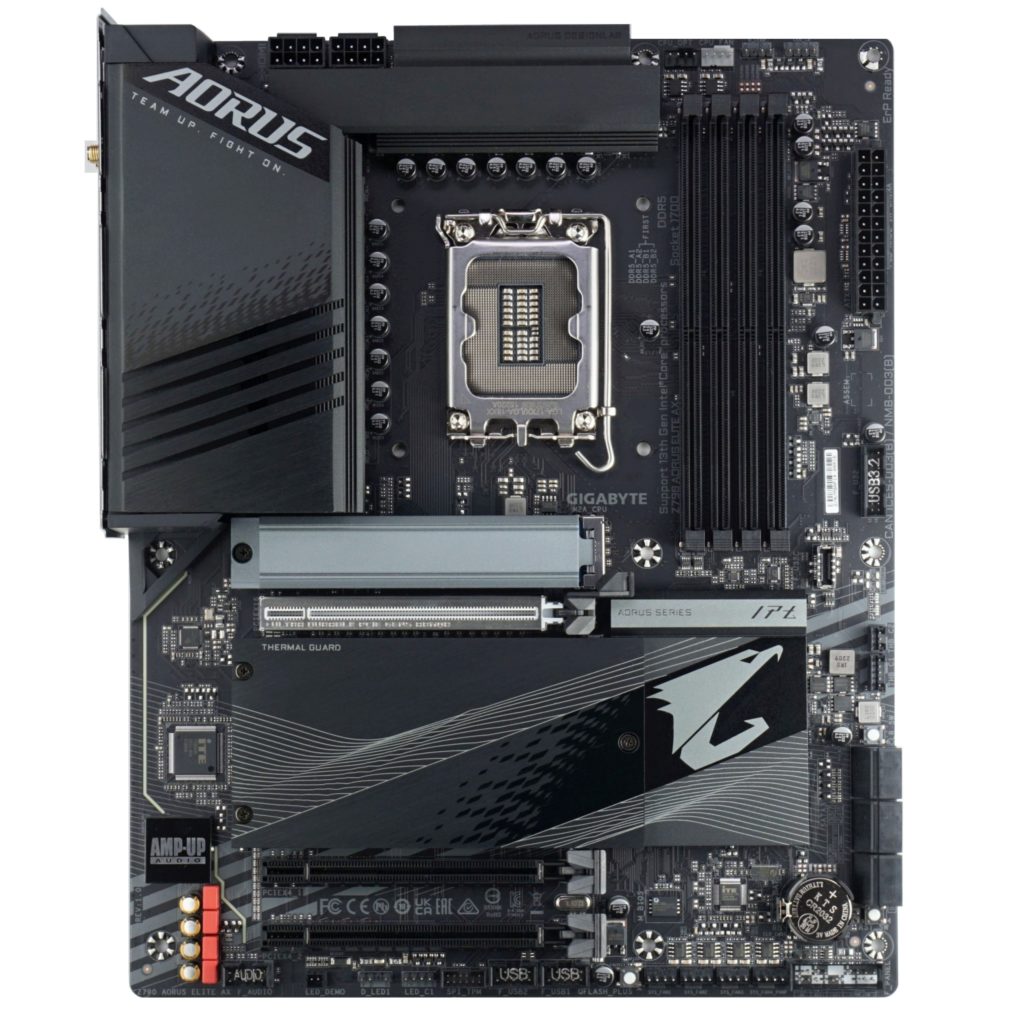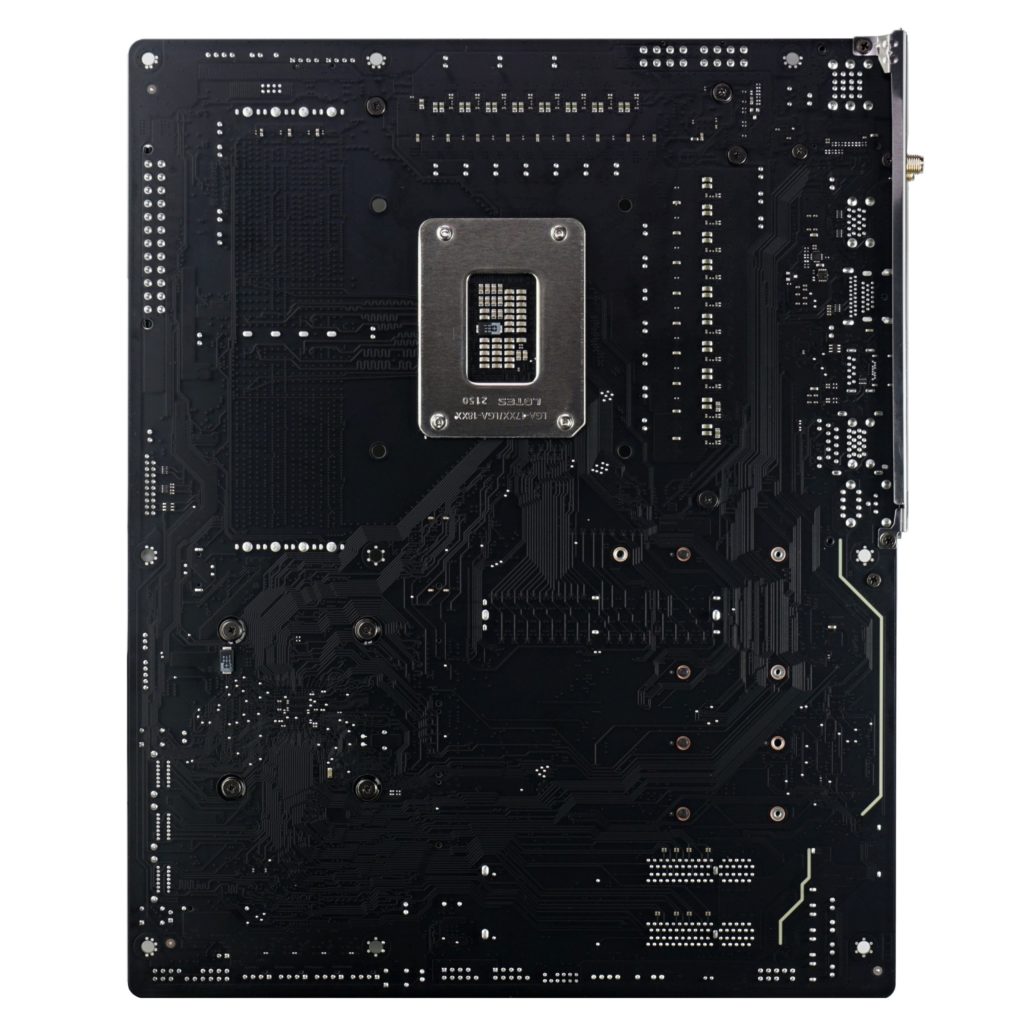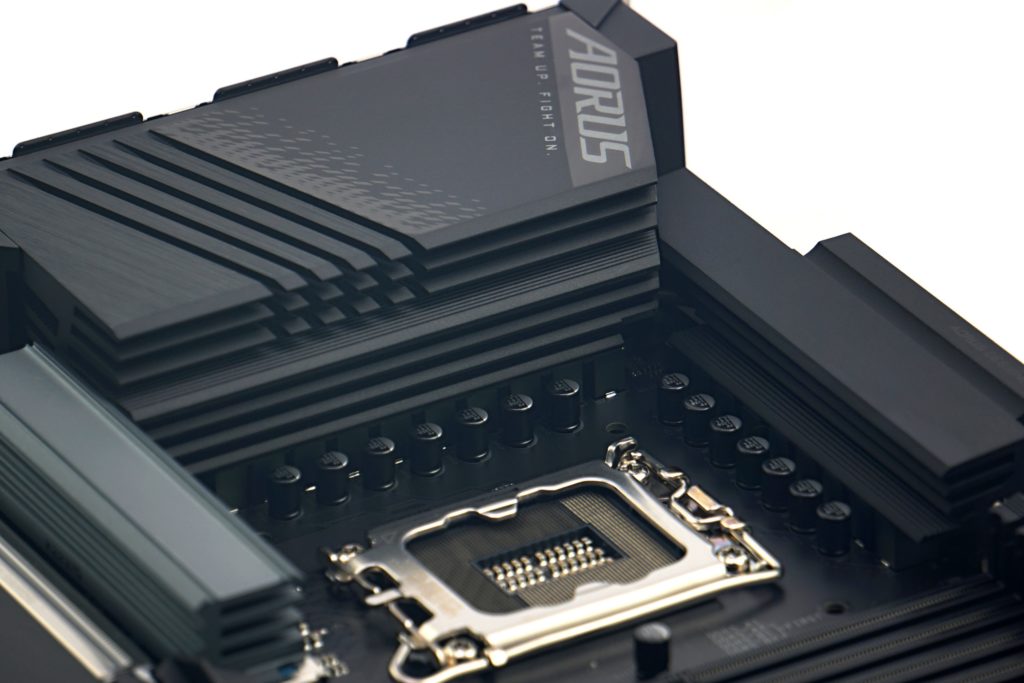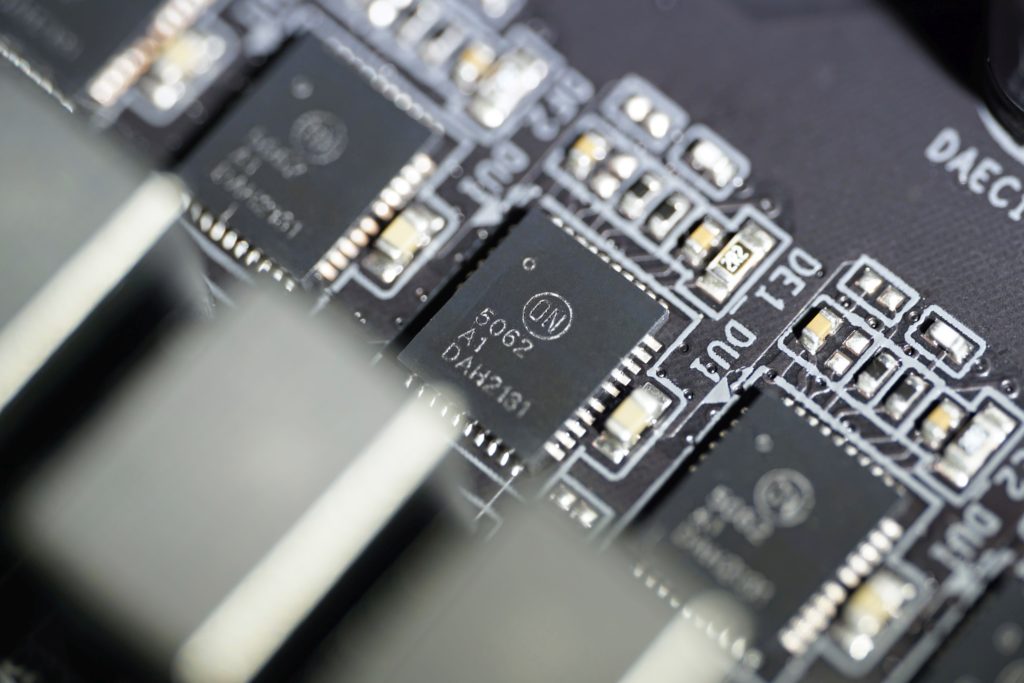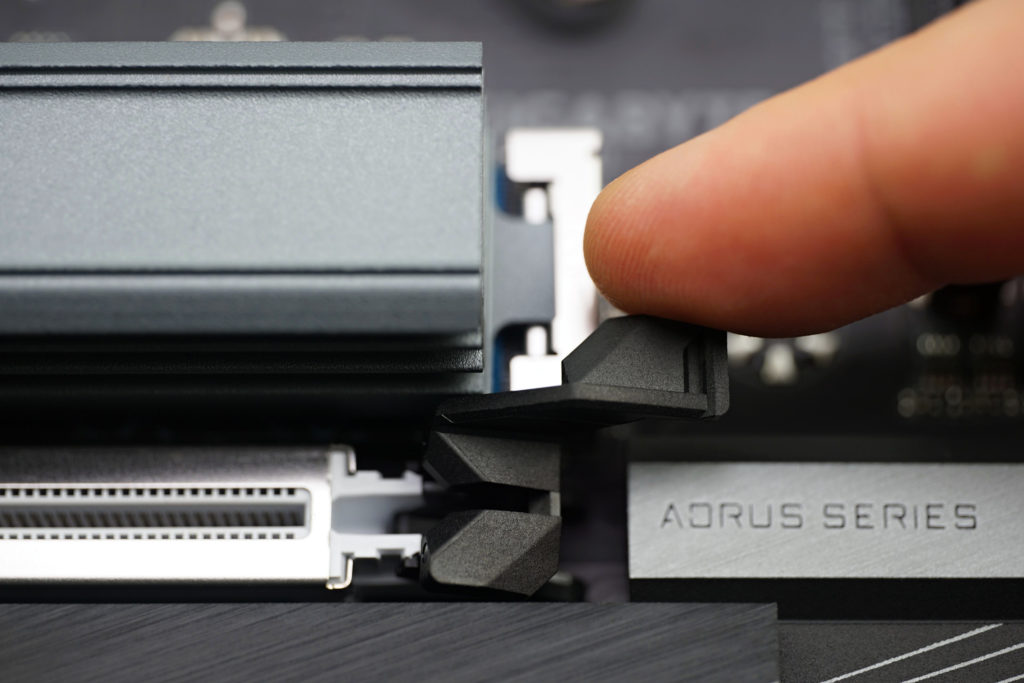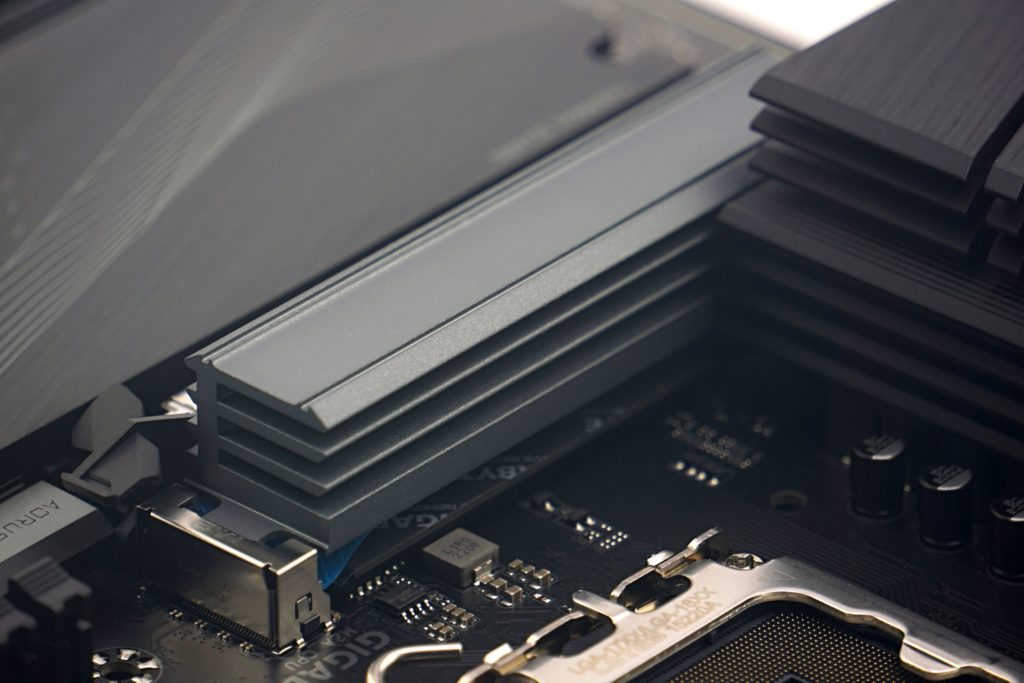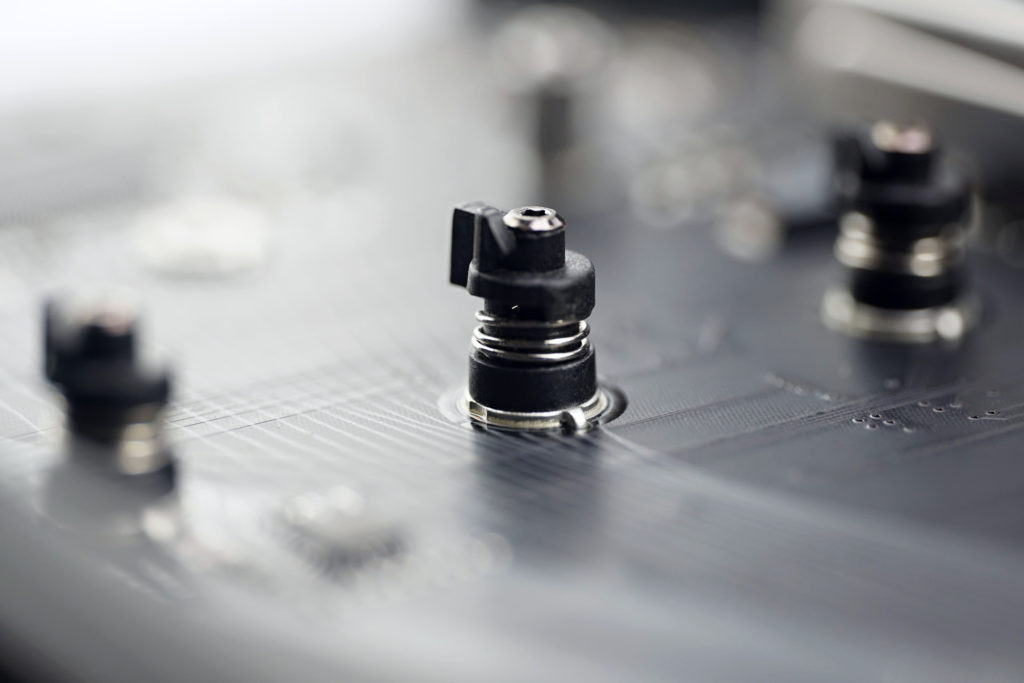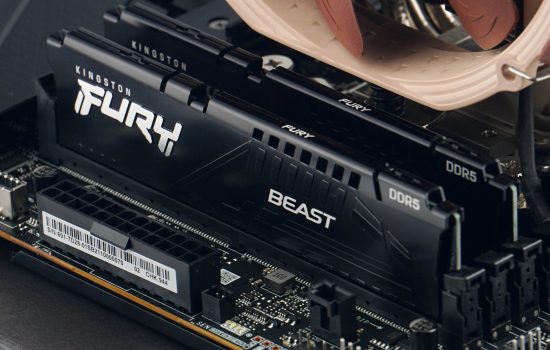Gigabyte Z790 Aorus Elite AX in detail
With motherboards, we don’t like to write about “gaming” hardware. They usually have virtually no effect on gaming performance. In this case, however, there is something to the marketing slogan, although not for free, and in some cases the higher performance is paid for by higher power draw in games. However, there are naturally more reasons to care about or, on the contrary, to avoid the Gigabyte Z790 Aorus Elite AX.
After the Asus ROG Strix Z790-E Gaming WiFi, the Gigabyte Z790 Aorus Elite AX is the second Intel Z790 chipset motherboard we’ll be taking a look at. We covered the key benefits of the new platform (Intel Z790) last time.
It is important to point out that the Gigabyte Z790 Aorus Elite AX is significantly cheaper than the mentioned Asus board from the previous test and should be treated accordingly when considering its features. The difference in price is about two hundred euros and for the sum of 330 euros it is one of the cheapest Z790 motherboards in ATX format with DDR5 memory support. In this class, Asus has the TUG Gaming Z790-Plus (or the Prime Z790-P/WiFi), MSI has Pro Z790-P/A WiFi.
| Parameters | Gigabyte Z790 Aorus Elite AX | |
| Socket | Intel LGA 1700 | |
| Chipset | Intel Z790 | |
| Format | ATX (305 × 244 mm) | |
| CPU power delivery | 19-phase | |
| Supported memory (and max. frequency) | DDR5 (7600 MHz) | |
| Slots PCIe ×16 (+ PCIe ×1) | 3× (+ 0×) | |
| Centre of socket to first PCIe ×16 slot | 90 mm | |
| Centre of socket to first DIMM slot | 56 mm | |
| Storage connectors | 6× SATA III, 3× M.2 PCIe 4.0 ×4 (42–110 mm) + 1× PCIe 4.0 ×4/SATA (42–110 mm) | |
| PWM connectors for fans or AIO pump | 6× | |
| Internal USB ports | 1× 3.2 gen. 2×2 type C, 2× 3.2 gen. 1 type A, 4× 2.0 type A | |
| Other internal connectors | 1× TPM, 3× ARGB LED (5 V), 1× RGB LED (12 V), 1× jumper Clear CMOS | |
| POST display | no (but has debug LED) | |
| Buttons | reset, Q-Flash, Clear CMOS | |
| External USB ports | 1× 3.2 gen. 2×2 type C, 2× 3.2 gen. 2 type A, 3× 3.2 gen. 1 type A, 4× 2.0 type A | |
| Video outputs | 1× HDMI 2.0, 1× DisplayPort 1.4 | |
| Network | 1× RJ-45 (2,5 GbE) – Realtek RTL8125B, WiFi 6E AX211 (802.11 a/b/g/n/ac/ax), Bluetooth 5.2 | |
| Audio | Realtek ALC897 (7.1) | |
| Other external connectors | – | |
| Approximate retail price | 330 EUR |
Gigabyte Z790 Aorus Elite AX
The Aorus Elite series is extremely popular among Gigabyte motherboards. The reasons why this is so are quite simple. The Aorus Elite series is extremely popular among Gigabyte motherboards. The reasons why this is so are quite. They are always very decently equipped motherboards that keep the pricing close to the ground. Sure, 330 euros can’t generally be considered a cheap affair, but with an estimate for use with a powerful and expensive CPU (such as Core i9-13900K or Core i7-13700K), even the motherboard already contributes significantly to the price/performance ratio, which will ultimately be attractive for higher-end PC builds.
The format is ATX, i.e. 305 × 244 mm. Also thanks to the robust heatsinks (which we will get to in more detail soon), the board makes a very solid impression. This time around, Gigabyte has taken the ARGB lighting theme in a simpler vein. Only the chipset heatsink is decently backlit.
No expense was spared on heatsinks. The CPU VRM heatsink weighs up to 460 grams and its two blocks are connected by a heatpipe. Its job is to get the heat to the largest surface area as quickly as possible, and the one here is quite large. The power delivery is built on ON Semiconductor integrated circuits. The PWM driver (NCP81530) is coupled to the FDMF5062 voltage regulators. In total, the board has 19 phases (voltage regulator, inductor, capacitor) with a current capacity of 1330 A, of which 16 (1120 A) are dedicated to the CPU power supply.
One of the intergenerational improvements is the raised and more offset safety latch for the first PCIe ×16 slot. This will allow for more convenient removal of the graphics card from underneath a large tower-style cooler. And it’s especially handy on this board, which has a relatively shorter distance between the CPU socket and the fastest PCI Express slot (5.0). However, it should be noted that this solution does not reach the elegance of Asus’ Q-release (with the latch up near the right edge of the PCB), and so in some cases, you might still reach for a pen or something to push the Gigabyte’s improved latch.
Compared to the previous generation of Z690 boards, the design of the heatsink on the first M.2 SSD slot is also improved, although it does not support the PCIe 5.0 interface (with possibly higher cooling requirements). Gigabyte made more use of the height, a space that never collides with anything, and stacked three 98 mm long fins above the base. A good transformation of one of the weakest SSD coolers (the first M.2 slot) that used to be on Z690 boards.
Underneath this heatsink is a thermal pad that transfers heat from the back of the SSD to the motherboard PCB. Everything looks great at first glance, but the whole system kind of stumbles a bit on weaker pressure. You detect this immediately, the heatsink in its position somehow wobbles and is quite unstable. It’s better with an SSD mounted, but at least with an SSD with dimensions at the level of the Samsung 980 Pro (a single-sided SSD with a thickness of 2.05 mm in the controller area and 2.50 mm in the memory area) there is weaker contact/pressure, which is also visible in the cooling. It’s not bad, but the result doesn’t match the heatsink design. The latter would have achieved better results with more efficient heat exchange.
The shared heatsink for the 2–4 SSD slots is of a similar design as on older Gigabyte boards. This means a low-profile, but long (70 mm) and wide (129 mm) block of aluminum, which also covers 110-millimeter SSDs: these, by the way, are supported in all M.2 slots. This heatsink has gained a bit more weight (it’s up to 139 grams), and the mounting system on the right side, to the chipset heatsink, has also changed. It is no longer attached to it with two screws, but only with one (in the middle). The advantage of this solution over the previous one is mainly that the screw has a securing washer underneath, so you won’t lose it. On the Z690 Aorus Elite AX (and on older Gigabyte boards in general) there was such a risk.
Around the M.2 slots, the most noticeable improvement has been the spacers for mounting SSDs. No sliding latches, as on competing boards, but simple snap-in. After inserting the SSD into the slot, you just place it on the header of the post on the other side, push lightly, this turns the spring a little and the moment the PCB slides below the level of the beak, it returns to its original position and the SSD is perfectly held in place. To release, you then slide the latch in the opposite direction. An extremely convenient and practical system that Gigabyte has really managed to pull off well.
There are four M.2 (M-key) slots on the board, but unlike boards that have five of them, even in the first slot there is no reallocation of PCIe lanes between the M.2 slot and the first PCI Express ×16 slot. The closest M.2 slot from the CPU socket is indeed brought out from the CPU, but it is connected by dedicated PCIe lanes. There are also a decent number of SATA ports, which are not mutually exclusive with any of the M.2 slots. Eventually, we can use all the M.2 slots and SATA ports in parallel, without sacrificing SSD performance.
There are not many of the other connectors, from the internal ones, some cases will miss the second 19-pin connector for connecting USB 3.2 Gen 2 1 connectors (the board only has one). There are an above-standard number of USB connectors on the rear I/O panel, but there are only six fast (5–20 Gbps) ones. Three USB 3.2 gen. 1 ports plus three USB 3.2 gen. 2 ports (including one 3.2 gen. 2×2 Type-C port). And, as is Gigabyte’s habit, up to four USB 2.0 ports have been brought out here as well. Sure, they’re slower, but they don’t restrict keyboard, mouse, and headphone connections, and you have to plug these peripherals in somewhere anyway.
The audio connectors are also unusual. Instead of the usual five 3.5 mm jacks, there are only two, but still maintaining the optical S/PDIF output. You can’t connect a home cinema to the board via jacks, but how many people do that these days? Gigabyte asked themselves this question, and they’ve obviously concluded that hardly anyone uses five jacks. But it is rather surprising that a board in this class uses a Realtek ALC897 sound chip. ALC1220(A) is, it seems, in short supply and manufacturers have to work with what is available. But the powerful operational amplifier and the WIMA “audio” capacitors remained in the audio adapter circuit. That said, the sound is still loud and clear.
- Contents
- Gigabyte Z790 Aorus Elite AX in detail
- What it looks like in the BIOS
- Methodology: Performance tests
- Methodology: How we measure power draw
- Methodology: Temperature and frequency measurements
- Test setup
- 3DMark
- Borderlands 3
- F1 2020
- Metro Exodus
- Shadow of the Tomb Raider
- Total War Saga: Troy
- PCMark and Geekbench
- Web performance
- 3D rendering: Cinebench, Blender, ...
- Video 1/2: Adobe Premiere Pro
- Video 2/2: DaVinci Resolve Studio
- Graphics effects: Adobe After Effects
- Video encoding
- Audio encoding
- Photos: Adobe Photoshop, Affinity Photo, ...
- (De)compression
- (De)encryption
- Numerical computing
- Simulations
- Memory and cache tests
- M.2 (SSD) slots speed
- USB ports speed
- Ethernet speed
- Power draw without power limits
- Power draw with power limits by Intel
- Achieved CPU clock speed
- CPU temperature
- VRM temperature – thermal imaging of Vcore and SOC
- SSD temperature
- Chipset temperature (south bridge)
- Conclusion







